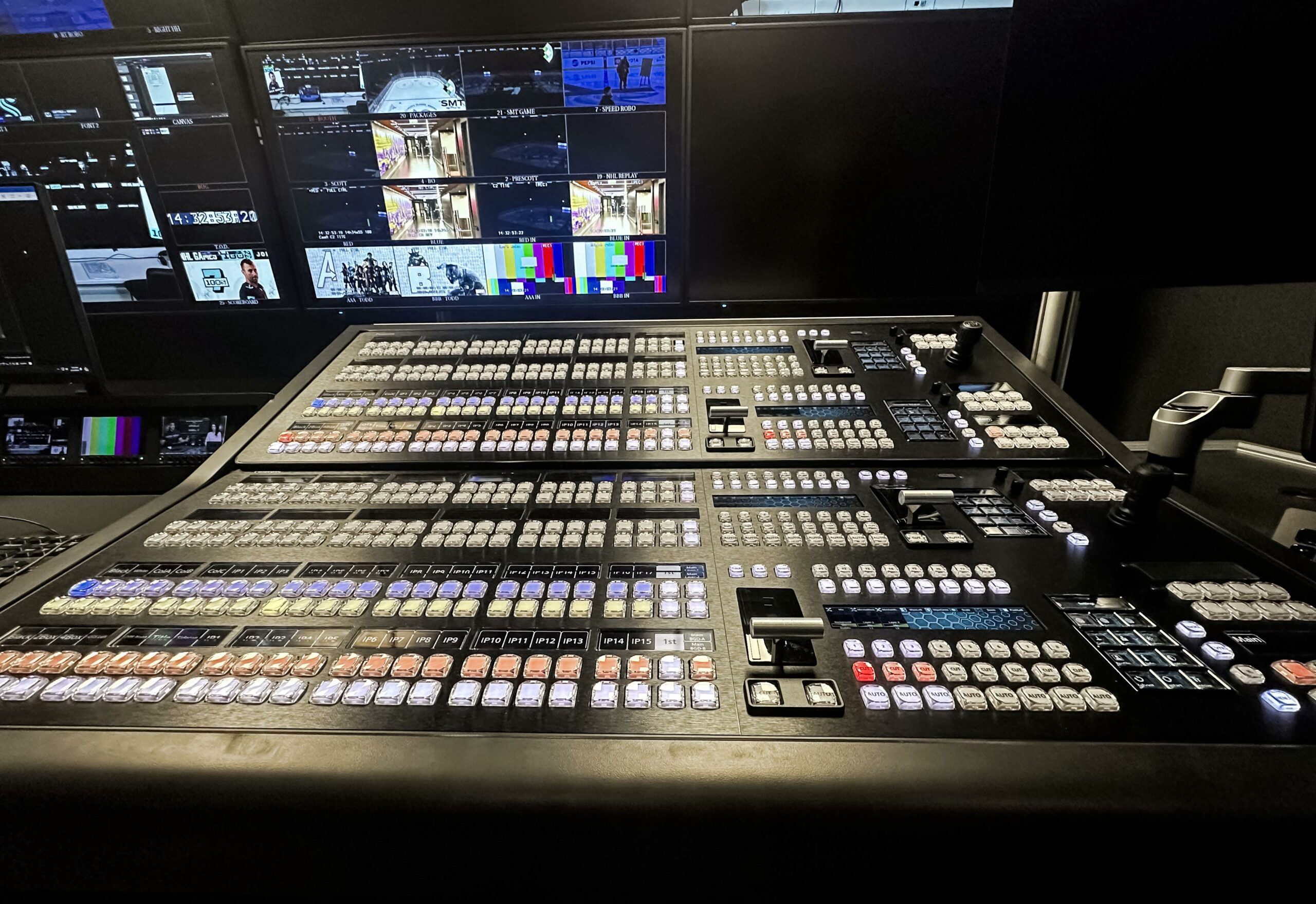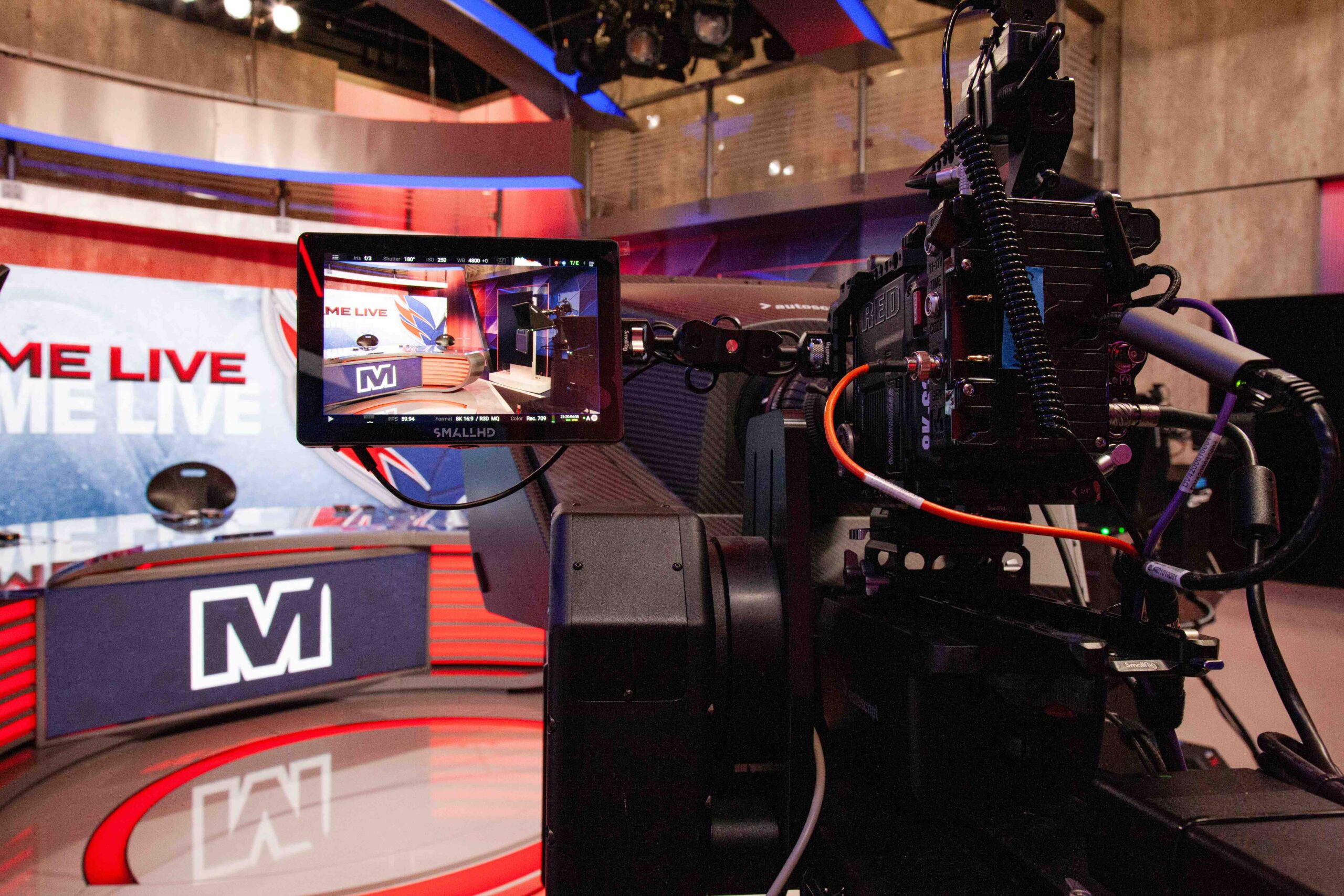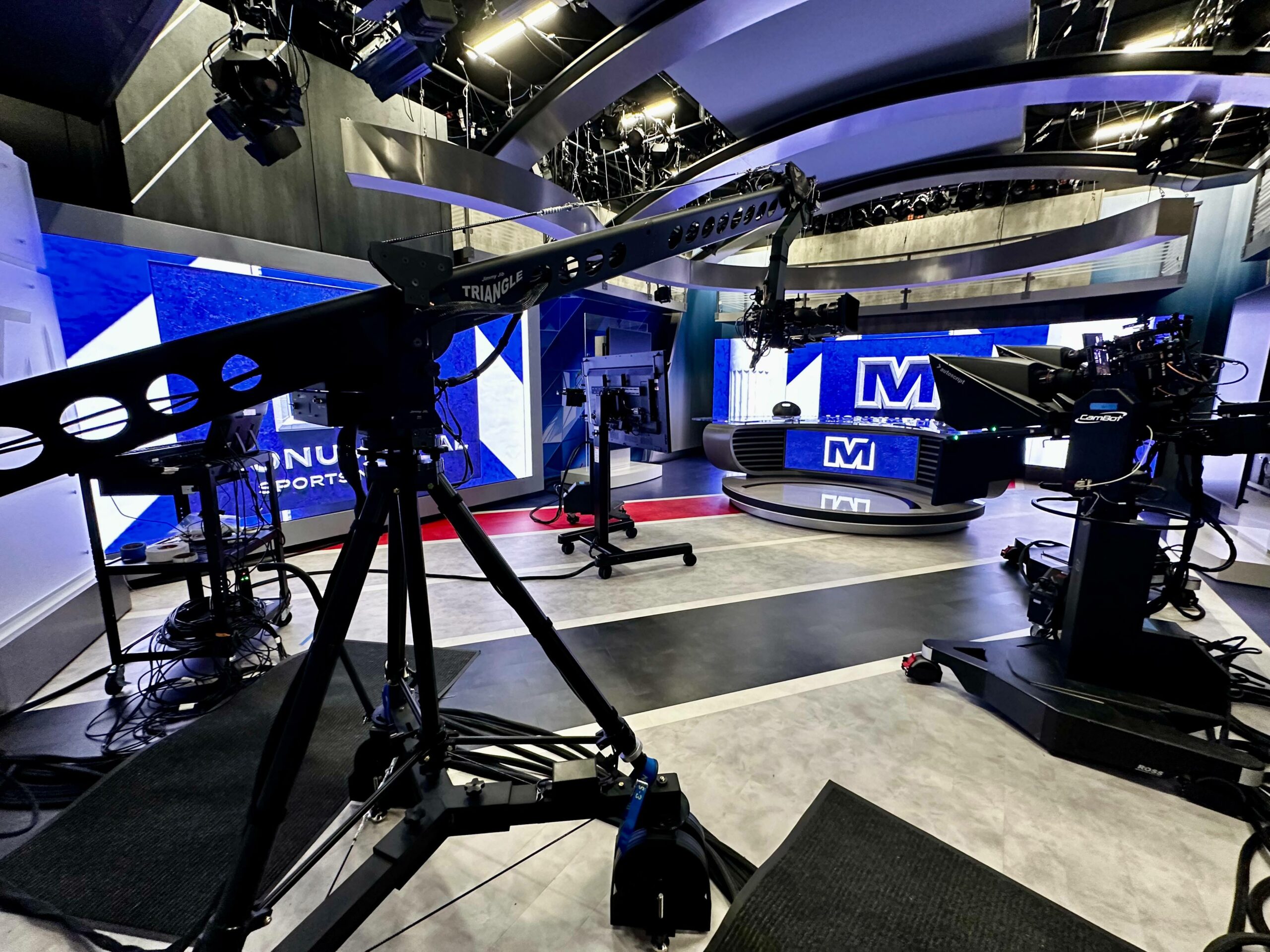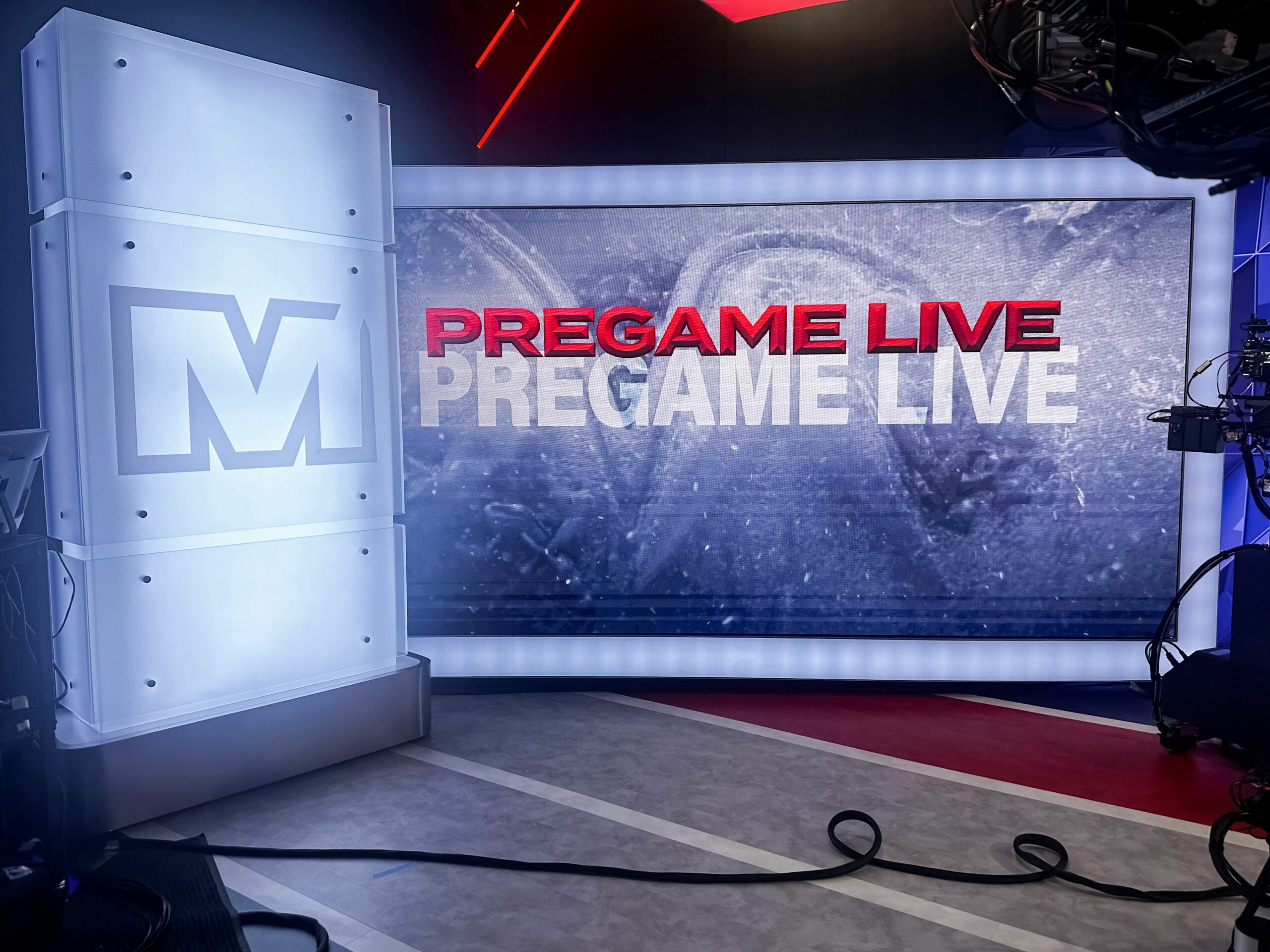Inside Monumental Sports Network’s New ST 2110 Production Facility: A National-Network Feel at DC’s New RSN
Flexibility is the mantra, with five control rooms, public/private cloud, virtualized editorial
Story Highlights
A new era in DC sports television dawns tonight. The recently launched Monumental Sports Network (MNMT) will debut its new multimillion-dollar, state-of-the-art production studios for the Washington Wizards–Sacramento Kings broadcast. Adjacent to Capital One Arena in Downtown Washington, DC, the SMPTE ST 2110, 1080p facility is among the most technologically advanced of any regional sports network in history.
“We are committed to building the best local-media sports experience for our fans,” says Zach Leonsis, president, media and new enterprises, Monumental Sports & Entertainment. “You can’t do that without building a world-class, national-broadcast–level production facility. We not only are able to improve the quality of our live game broadcasts, which is where the lion’s share of the value is for our network, but can also build a platform to produce more great programming outside of live games.”
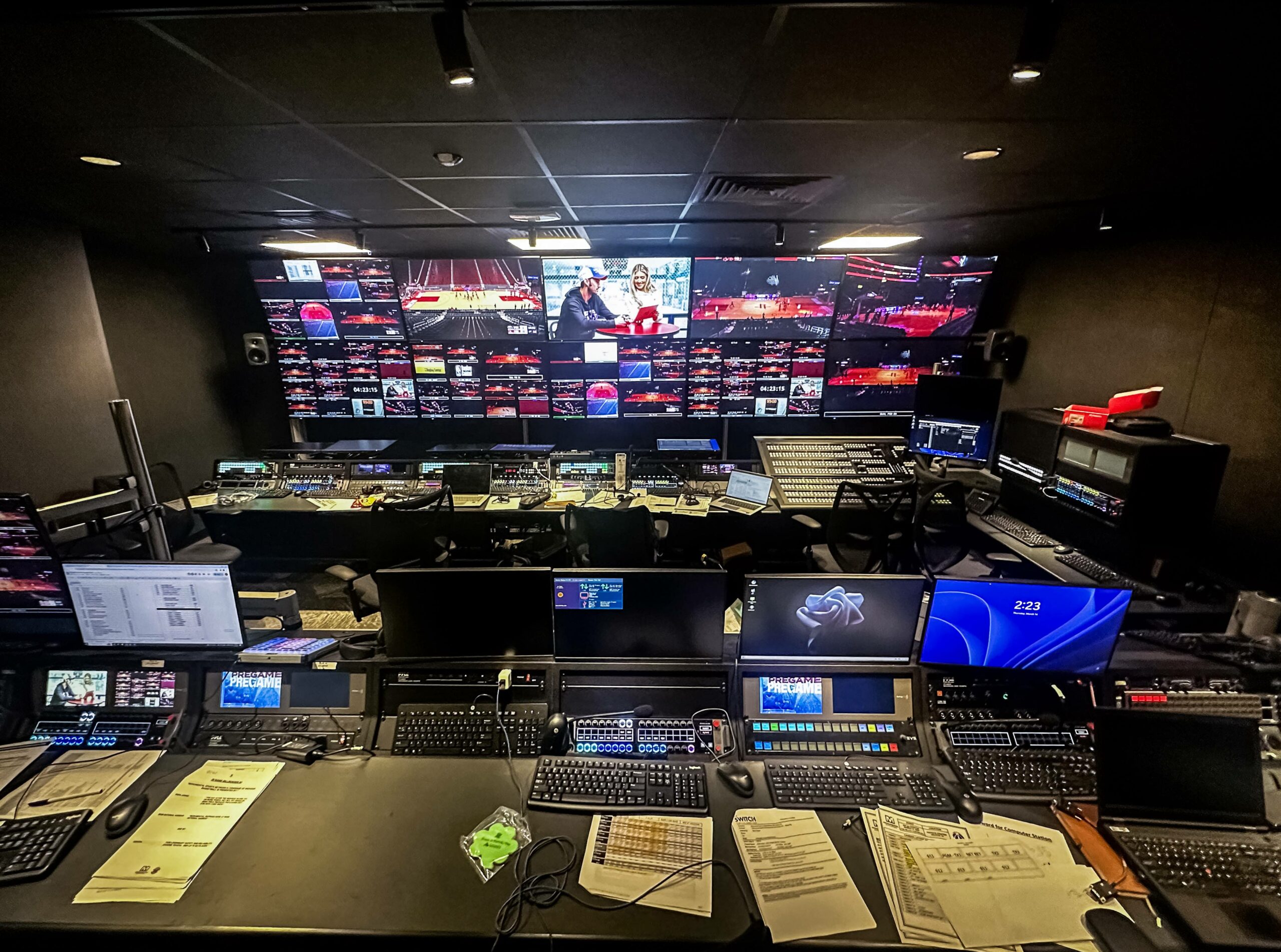
All five of the Monumental Sports Network’s new control rooms, including this one, are 4K HDR-capable.
MNMT’s two-story, SMPTE ST 2110 production center features two studios that can combine on non-conflict nights to create a single national-telecast–worthy experience. With systems integrated by Diversified, the facility is also home to two insert studios, five control rooms to produce multiple events simultaneously, and office space for more than 150 Monumental Sports & Entertainment (MSE) employees.
“In addition to [providing] a top-of-the-line look in the studio,” says MSE CTO Charlie Myers, “we spared no expense [to ensure] the infrastructure was top-notch as well. I was appreciative of the direction from Zach and our leadership team, which was ‘let’s do this the right way so that we can scale in the future and be ready for whatever comes our way.’”
Moving on From the Peacock, Creating a New Monumental Home
Even before MSE — which owns the Wizards, Capitals, Mystics, and G-League’s Capital City Go-Go, along with Capital One Arena — closed its deal to acquire all of NBC Sports Washington in September 2022, Leonsis and Myers had begun designing the new facility.
Through the end of the 2022-23 NBA and NHL seasons, the network continued to operate out of NBC’s production center via a transition-services agreement. For the 2023-24 season, MSE’s team found space for a temporary control room on the concourse level at Capital One Arena and housed its pre/postgame studios in MSE’s nearby District E esports venue.
“In 2022-23, we were flying the NBC Sports Washington plane while simultaneously developing, designing, and beginning to construct brand-new solutions in the background,” says Leonsis. “2024 is going to be a transformational year for us with launch of a lot of new initiatives and infrastructure. Opening this new facility before the end of this season is a great mile marker for us.
“I think the 2024-25 season is going to be the new normal for how we want this network to look and feel,” he continues. “This IP-based facility has tremendous capability and scalability and prepares us for a future when we’re going to be distributing our video continually, not only on linear, but also direct-to-consumer. And there will be additional distribution pathways in the future.”
Building an IP Facility, Embracing the Cloud, Prepping for the Future
Because Capital One Arena is already at full capacity, building a broadcast center there was not an option. MSE secured fresh office space next door at 700 6th St. However, even before the physical space was finalized, the key technical decision for Myers’s team and Diversified was whether to build an IP facility based on ST 2110 or stick with baseband SDI.
“A lot of people were pushing us to go SDI because they thought 2110 was just too complex and we weren’t ready for it,” says Myers. “But, from my perspective, we had to ask where are we going to be in the next five to 10 years and what are our intentions to grow the business. In my view, 2110 was a ‘must’ right off the bat to get where we needed to be.
“We wanted to set ourselves up to be ready for 4K, 8K, HDR, or anything else that comes down the line,” he continues. “We created the foundational network and infrastructure that can support whatever comes our way. All those factors led us to building an ST 2110 facility.”
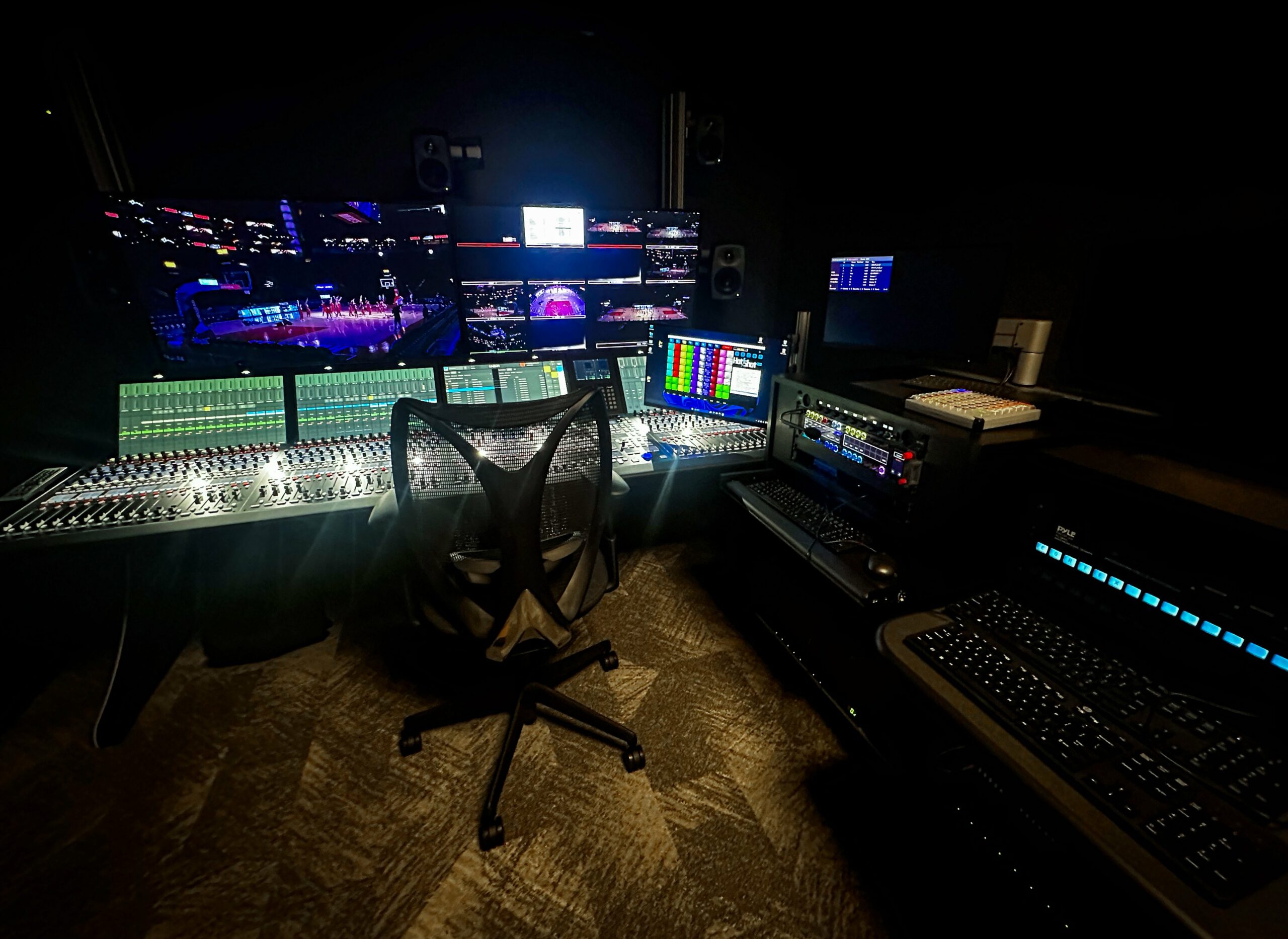
All Lawo audio consoles at MNMT’s new production facility can handle 1,536 channels of digital-signal processing.
The ST 2110-07–compliant facility is built on a spine-and-leaf platform with red and blue networks running on an Arista core. The fully redundant, hitless network is capable of 9.6-TBps switching.
The 2110 orchestration system relies on the EVS Cerebrum control and monitoring system and can control, manage, and route 4,096 sources to 4,096 destinations. MNMT deploys EVS Neuron “modular glue” processors as media gateways throughout the facility and relies on TAG VS multiviewers.
“We have a lot of automation built in, so [the producers] are going to be able to focus on the content and not worry about the technical side,” says Myers. “Under the previous legacy system, it was a dog to get something published and it took a long time, but now we have automated [workflows] in our media asset management that is going to streamline all that. That’s going to have a direct impact on our fans and they’re going to have a better experience.”
All audio consoles are Lawo, and the audio-over-IP platform is capable of 1,536 channels of digital-signal processing. The studios feature 18 channels of wireless microphones and IFB.
An army of Riedel Communications gear is also on hand, including three Artist digital intercom matrices, 14 Bolero antennas, 58 1232 SmartPanels, 25 1216 SmartPanels, 10 Bolero Wireless Intercom Beltpacks, 83 AIR headsets, and 10 PRO headsets, among others.
With EVS XT-VIA replay systems installed, 10 replay positions are each capable of 6×2 channels of replay. The replay workflow also has the capability of 3-phase super-slow-motion.
“We wanted to embrace public- and private-cloud workflows, so all the infrastructure is virtualized here,” says Myers. “Every [workstation] in the studio is a zero client with a VM behind it, and we essentially have built our own [on-premises] private cloud. It doesn’t matter where the compute [occurs]; all the infrastructure is virtualized, which is very different from how most RSNs have operated in the past.”
The network’s new virtualized editorial platform can support more than 20 on-premises or remote editors with 750 TB of Vast Data on-premises storage. The Vast Data low-latency, high-uptime, high-throughput platform is being used not only for storage of media assets but also for VMs and other key backend technology. The facility is equipped with 88 record channels and 42 playout channels for current production; 99,000 files (282 TB) have been transferred from the previous storage system to the new platform.
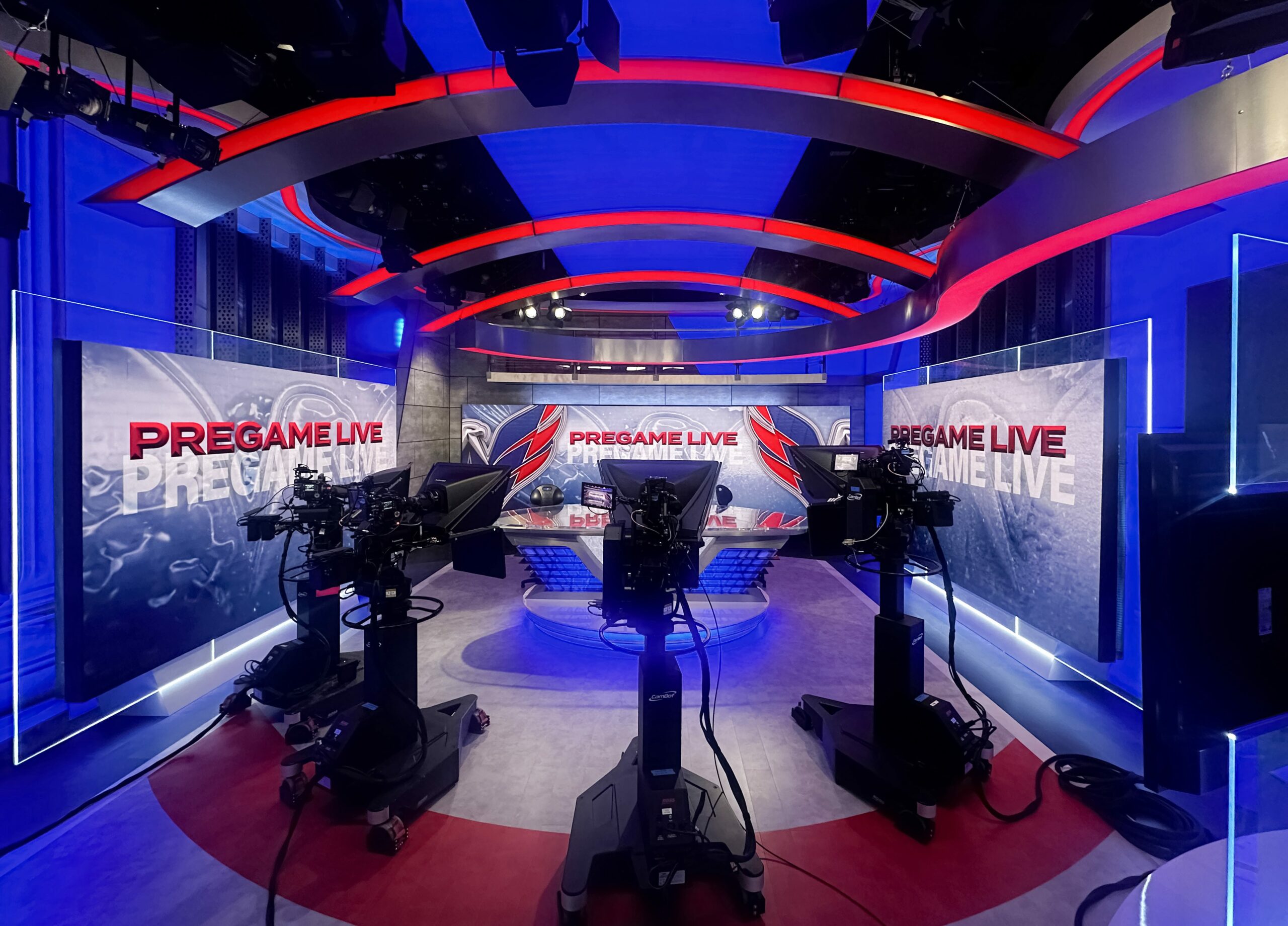
Devlin Design Group designed the studio and sets for pre/postgame shows, halftime and intermission reports, and other original programming on MNMT.
Dalet Flex and Galaxy products provide media-asset management. Galaxy handles on-premises newsroom functions for the 179 desktop monitors in the building, and the cloud-based Flex platform serves as a media repository for content that the production team can access from anywhere.
“The criteria that I challenged the team with [were] platforms that are software-based [and] offer the same toolsets both on-premises or in the cloud. We made our decisions largely based on that [philosophy],” says Myers. “At the same time, we wanted to make sure the [production team] is comfortable with the transition. We’re going from a Yugo to a Tesla in terms of the way [these systems] act, respond, and look so we were careful to make sure everyone was comfortable with the functionality.”
The central equipment room houses more than 125 servers in 60 racks, redundant power systems with 1.5-kW generator backup, and a data-center–grade cold-aisle containment system. In all, more than 250 miles of fiber (enough to connect DC and New York City) runs throughout the building.
“We spent a lot of time talking about how we have to be scalable and ready to react instantly,” Myers explains. “If a great idea comes along for our product, we don’t want infrastructure to be a hurdle; we want to be able to spin things up quickly. We are now in a position to do that, having built a private cloud based on ST 2110; we can also flex into the public cloud or hybrid cloud down the line.”
Five Control Rooms Designed for Maximum Flexibility
All five production-control rooms are capable of 4K HDR (although they are currently operating in 1080p60 SDR) with full graphics, 16-channel audio, up to 192×96 I/O, and unlimited mix-effect (ME) buses with next-generation GPU.
The primary control room is outfitted with a high-end Grass Valley switcher; the four others feature Panasonic Kairos software-based switchers. In all, 179 desktop monitors are deployed throughout the control rooms.
PCR1, the largest and most advanced control room, will be used for the majority of game broadcasts. As a result, MNMT will be among the first RSNs not to have a traditional mobile-unit setup for its game productions, having used a Game Creek Video mobile unit in the past.
“PCR1 will be our live-game [facility], replacing the traditional truck functionality,” says Leonsis. “Game Creek Video has been a phenomenal partner and will continue to be a great partner in providing cameras and other facilities, but our primary focus here is flexibility.
“We think the value of our live rights is significant,” he continues. “Where much of the world is cutting expenses, we believe we should be investing back into our product. We have faith that we’re going to be distributing our [content] in a variety of ways in the future, which means that our mantra has been ‘owning our own destiny.’ The design of this facility buildout reflects that belief.”
PCR2, 3, 4, and 5 are outfitted with Panasonic Kairos software-based switchers. PCR3 and 4 will be used largely to produce pre/post studio shows, and PCR4 and 5 have the capability to serve RAPS (remote-access-production-system) shows for Wizards, Capitals, and Mystic away games.
“We have a lot of teams on our network,” notes Myers. “On any given night, all five control rooms could be live. PCR1 could be used for a live home game with PCR2, with a separate crew, handling pre and post shows for specific games. PCR3 could be doing a pre/post for another team. Then PCR4 might be handling an away game as a RAPS [production], and PCR 5 could have a Go-Go game. Add in our two insert studios, and you can see how much firepower we have to cover those busy nights.”
Leonsis adds, “This is a facility that can have several different programs all at once; we can handle three simultaneous home games if necessary, which is exciting. I can’t wait for those big nights when every room is up and running.”
Sparkling New Studios Take Shoulder Programming to New Level
Monumental worked with Devlin Design Group to design the studio and sets for its pre/postgame shows, halftime and intermission reports, and other original programming.
“We wanted to build a studio that accomplished a couple of goals,” Leonsis explains. “First was to create an innovative look that was bright, bold, confident, and authentic to reflect our brand. Second, we wanted to build something that had a national look and feel, not a mom-and-pop shop. Washington, DC, and the greater DMV is one of the most influential and important media markets in the entire country, and we felt like we had an obligation to our fans and to the community to build a national-quality experience.”
Monumental extended through an entire floor to get two floors’ worth of ceiling height and create a 3,000-sq.-ft. space that could accommodate two side-by-side studios for nights when multiple games place at once. On non-conflict nights, the production team can retract a Skyfold wall and create one massive studio.
The sprawling custom-built space features 1,200 sq. ft. of 4K-quality LED monitors and a 1.9-pixel-pitch LED wall offering maximum flexibility.
“We’re aiming for a grand experience reminiscent of what people are used to seeing when they watch the great national broadcasts on ESPN or TNT,” says Leonsis. “We will use the jib to get those beautiful dynamic shots. We imagine eventually making full use of this great space and incorporating additional on-air talent into our shows for live demonstrations.”
The main studios feature 24 cameras (outfitted largely with Canon lenses), including 10 4K HDR-capable RED production cameras, a 16-ft. jib, and 13 robotic PTZs.
“I think that, when we launch,” says Leonsis, “our team is going to be focused on nailing the fundamentals and, by the time we get to next fall, we will be using the space to its full potential.
Looking Ahead: 4K, HDR, the Cloud, and Beyond
When the facility officially debuts tonight, MNMT will be producing content in 1080p60 SDR, and the program feed will be natively played out via Encompass Digital Media in 1080p60 (the feed is converted for distributors that can take only 1080i). But that is just the first step in Monumental’s technical roadmap. Both 4K and HDR are potentially on the horizon.
“We’re coming out of the gate in 1080p60 SDR,” Myers points out, “but that doesn’t mean we don’t have our eye on the future already. We’re still not sure that HDR is worth it for indoor sports that are very well lit. We are sitting back on that one, but all the kits are capable of doing it. In the studio, our RED cinematic cameras are capable of 8K so we have the capability to switch to a higher resolution when a distributor or a consumer segment is ready to do that. We are being very strategic about it, but the system is available to do [4K and HDR] whenever we want to flip the switch. We’re excited about that future potential.”
Despite the headwinds currently facing the RSN business, Leonsis and his team see a bright future and are investing accordingly. With an eye on enhanced storytelling and fan engagement, a new chapter kicks off tonight.
“I can’t wait for our fans to enjoy a premium experience for their pre- and post-game viewing experiences and for the games themselves,” says Leonsis of his excitement around the new facility. “The live-game experience is sacred, and my goal is for every single one of our games to feel like a big-time event for our fans. That’s what our fans deserve, and that’s what we’re going to strive to deliver for them.”
